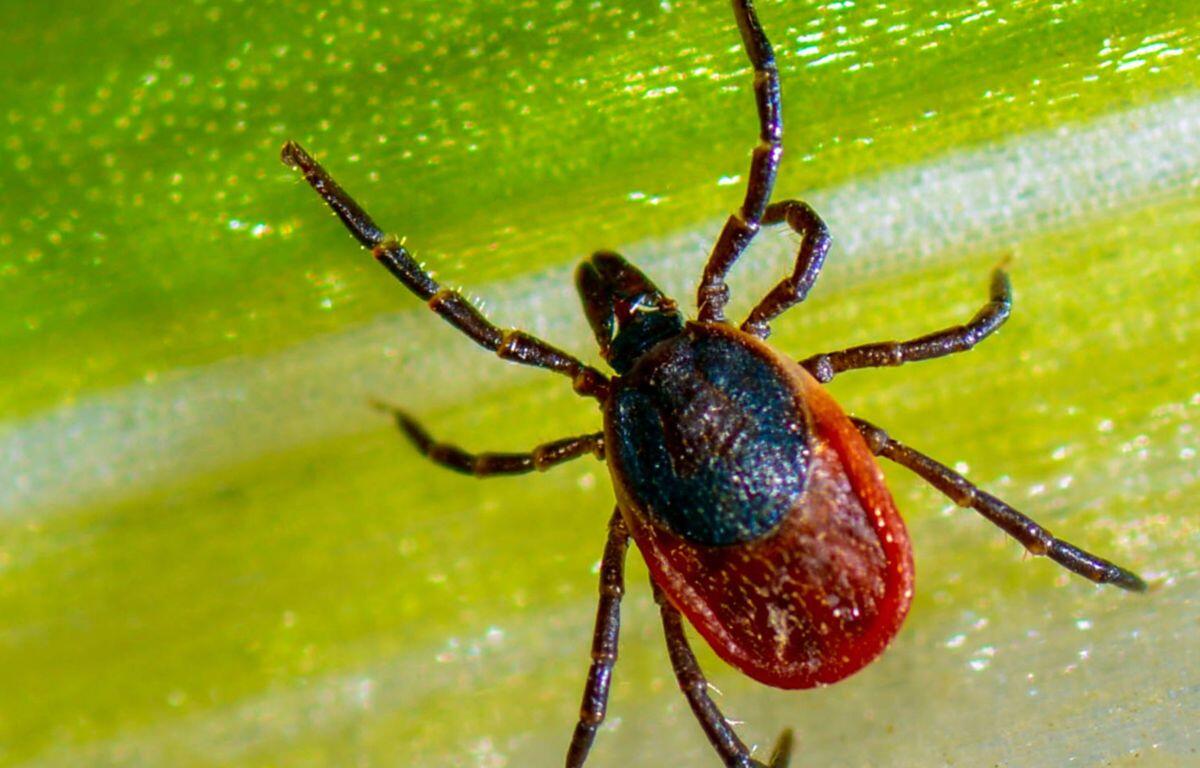MONADNOCK REGION, N.H. (MyKeeneNow) As warmer weather approaches, the season for fleas and ticks is quickly upon us, making it more important than ever to protect your pets from these pesky parasites. These tiny invaders not only cause discomfort but can also carry serious diseases, which makes prevention a top priority.
With so many treatment options available — from natural remedies to chemical solutions — it’s essential for pet owners to explore all choices and determine what’s best for their pets’ health and well-being. Whether you’re seeking a chemical-free solution or a more traditional approach, understanding your options is key to keeping your pet safe and comfortable all season long.
In New Hampshire, fleas and ticks are most active during the warmer months from April to November, but they can be present year-round, particularly indoors. Ticks, with their two-year life cycle, can become active whenever temperatures rise above freezing.
Debbie Wojtkielewicz, manager of Horse and Buggy Feeds in Keene, shared that their most popular flea and tick treatments are topicals that are applied to pets and last for 30 days.
“These treatments kill eggs, larvae and adults, helping to break the life cycle so you’re not always treating them daily or weekly,” she explained. “We also offer natural alternatives, which I used on my own dog because she has allergies.”
Another option includes internal treatments, such as chewables and tablets, which are typically available only through a veterinarian. While some pet owners find these effective, Wojtkielewicz cautioned that there can be side effects.
Horse and Buggy Feeds offers a wide range of traditional flea collars and sprays, along with natural alternatives. These natural options often contain ingredients like clove, cinnamon, eucalyptus, citrus or peppermint. Cedar is another effective deterrent that many pet owners use in pet beds to keep pests away.
Wojtkielewicz also emphasized the importance of treating not just your pets but also their environment. Fleas and ticks often live in or near your home. In addition to sprays and dusts, there are also sticky traps that attract and capture pests, reducing the need for harsh chemicals. “If you catch the problem early, non-chemical solutions can sometimes be very effective,” she added.
“One of my favorite ways to prevent ticks is diatomaceous earth,” shared Wojtkielewicz. Diatomaceous earth is made from the fossilized remains of tiny, aquatic organisms called diatoms and it kills bugs by damaging their exoskeletons with its sharp, microscopic edges, causing them to dehydrate. “I had a dog who was very sensitive. I would always treat her kennel with diatomaceous earth and I found that it was very effective. I only had to treat it once or twice a year and she would be tick free out there.”
For homeowners looking to protect their yards, there are also chemical-based products available to treat the lawn and kill both fleas and ticks, as well as other pests.
This year, Horse and Buggy Feeds is carrying a new product called the Tick Mitt. Made from microfiber material, this reusable, chemical-free mitt helps remove ticks before they attach. You can use it on both yourself and your pet. “You simply run it over you or your pet, and the ticks stick to the mitt,” Wojtkielewicz explained. “Afterward, you place it in a special bag and throw it in the dryer to kill the ticks.”
“We also have tick tape, which you can wrap around your ankles,” she added. “The ticks crawl up and stick to the double-sided tape. It’s a new product for us this year and has been flying off the shelves!”
It’s important to prevent fleas and ticks because they can transmit diseases such as Lyme disease, Anaplasmosis and tapeworms. They can also cause flea allergy dermatitis and anemia in pets.
In New Hampshire, a significant percentage of dogs test positive for Lyme disease, although many show no symptoms. However, they can become symptomatic at any time. Wojtkielewicz shared her personal experience: “My girl wasn’t symptomatic until she was 10 years old. A regular blood test revealed she was Lyme positive, but she didn’t show symptoms immediately. Lyme disease is treatable with antibiotics.”
“Lameness is a big symptom, she suddenly went non-weight bearing on her back feet. It was the middle of February, so she hadn’t been bitten recently.” Some other common signs of lyme disease in pets are joint pain, swelling, fever, decreased appetite, lethargy and swollen lymph nodes.
“I like to make sure that people know we have natural alternatives that help prevent flea and tick problems. Prevention is probably the most important treatment and you will be less likely to be affected by them,” Wojtkielewicz added.




